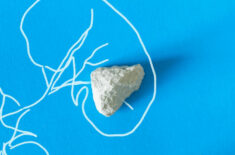Overview
A UTI (urinary tract infection) is a bacterial infection in any part of the urinary tract – bladder, kidneys, ureters, or urethra.
UTIs are a common health issue for women who at greater risk than men developing recurrent UTIs.
Most UTIs occur in the lower half of the tract – the bladder and urethra.
UTIs happen when pathogenic bacteria (harmful bacteria) overgrow in the urethra or bladder walls.
Many UTI cases are caused by a type of bacteria called Escherichia coli (E. coli).
Bladder infection and UTI symptoms include:
- A burning sensation when urinating
- The sense of having to urinate frequently and urgently
- Cloudy, red, or pink urine
- Inflammation of the bladder (cystitis)
- Pelvic pain
Untreated UTIs can result in complications like a kidney infection, so it’s essential to see your doctor as soon as you begin experiencing symptoms.
UTI treatment depends on the severity of your infection.
It often involves a course of antibiotics.
Natural ways to manage and prevent UTIs include:
- Cranberry juice –
- D-mannose
- Vitamin C
- High-quality probiotics
- Essential oils
Essential Oils As Natural Remedies
Essential oils are highly concentrated plant extracts containing active chemicals known to help support a healthy immune system.
Aromatherapy is alternative medicine and a holistic healing treatment incorporating the use of essential oils as home remedies for various conditions like:
- Colds and coughs
- Sinus infections
- Sore throats
- Soothing eczema
- Psoriasis relief
- Shingles
- Diabetes and blood sugar balance
- Soothing headaches and migraines
Many essential oils are also highly anti-inflammatory and act as natural pain relievers, making them particularly useful for treating infections like UTI.
EOs like oregano, tea tree, and clove oil contain antifungal and antibacterial properties that help keep yeast infections at bay.
The Best Essential Oils For UTI
Tea tree oil (Melaleuca alternifolia)




This powerful oil has been used medicinally by Australia’s Aboriginal people for hundreds of years.
Its antiseptic and antimicrobial properties make it effective at accelerating healing.
As an antibacterial, it’s proven effective against E.coli, Staph infections, Klebsiella, Prevotella, Streptococcus pyogenes, and many other pathogens. (5)
Clove oil (Syzygium aromaticum)




Clove essential oil is a stealth killer of parasites, viruses, fungi, and bacteria while also being a strong pain reliever.
It can combat E.coli, Staphylococcus aureus, and Candida albicans too. (3)
Clove oil has also been shown to increase total leukocyte (white blood cell) count while also restoring antibody immunity in mice whose immune system was compromised. (4)
Oregano Oil 


Thanks to its rich content of carvacrol and thymol, oregano essential oil is often referred to as ‘Nature’s Antibiotic.’
Oregano oil has high antibacterial activity that seems to be useful for bacterial strains showing antibiotic resistance, like E.coli. (1)
When tested against 11 strains of multi-drug resistant bacteria, the researchers concluded that oregano oil was a potential alternative to antibiotics for wound infections. (2)
Lemongrass oil


Lemongrass is a pain-reliever, antioxidant, antiseptic, and a calmative.
A 2010 study found that lemongrass was effective at killing harmful bacteria like E.coli and Staphylococcus aureus. (6)
Other essential oils that are known to boost immune function and possess antibacterial properties are:
Safety Concerns
When used mindfully and safely essential oils tend to offer little to no harmful side effects, although it can happen.
Common side effects include allergic reactions, skin irritation, and sensitivity to sun exposure after topical use.
If you experience any adverse reaction to any oil, then discontinue use immediately.
Perform a patch test on a non-affected area and wait 24-48 hours for a potential reaction.
Always dilute your EOs with a carrier oil before applying it directly to the skin.
Applying EOs on mucous membranes and sensitive tissues like the vagina or urinary tract can irritate even if you diluted it first.
It’s important only to choose certified organic, 100% pure, therapeutic-grade essential oils for maximum medicinal effects.
Many oils on the market are diluted or contaminated with potentially harmful chemicals, so do your research first.
Also, take note of each oil’s contraindications as some oils aren’t suitable for pregnant or nursing women, babies, and young children.
Create your essential oil blends to enhance and amplify the oils’ therapeutic effects.
Please note that essential oils should not replace conventional treatment for a UTI.
They’re most effective when used as a complementary therapy to medication.
Always consult with your doctor before using EOs for a UTI.
How To Use Essential Oils For UTI
Topical application:
Always dilute your EOs in a carrier oil like coconut oil when applying directly to the skin.
Stick to 2-3 drops of EO per 1 teaspoon of carrier oil.
Massage the mixture around the lower belly and the sides of the hips.
EOs should never be applied directly to the genitals, as this can cause irritation or adverse reactions.
Add a few drops of EO to warm or hot water to make compresses. Or add EOs to your bathwater for a healing bath soak.
Inhalation:
Use a diffuser or an inhaler for this method.
Add 12-15 drops of EO in your diffuser or add 20-30 drops of EO to your inhaler’s cotton wick.
Proceed with caution if you have asthma, COPD, or other respiratory issues.
Ingestion:
You can also consume 3-5 drops of food-grade or supplement grade oregano oil.
Dilute it with a tablespoon of extra virgin olive oil before swallowing.
Do this twice a day for a maximum of seven days.
Pair this mixture with a daily dose of high-grade probiotics.
REFERENCES
:
(1) https://www.ncbi.nlm.nih.gov/pubmed/23484421
(2) https://www.ncbi.nlm.nih.gov/pmc/articles/PMC6182053/
(3) https://www.ncbi.nlm.nih.gov/pubmed/17900043
(4) https://www.ncbi.nlm.nih.gov/pubmed/19589240
(5) https://www.ncbi.nlm.nih.gov/pmc/articles/PMC1360273/
(6) https://www.sciencedirect.com/science/article/pii/S1995764510601290













